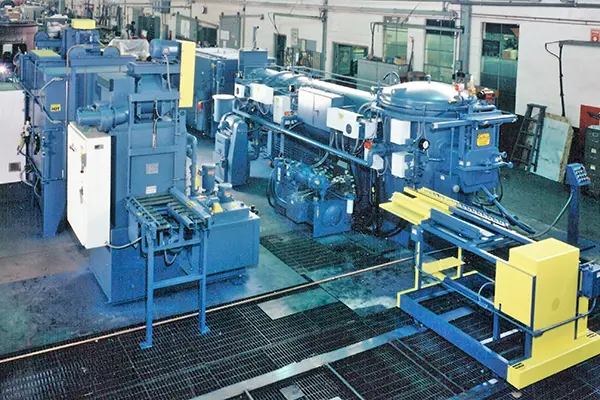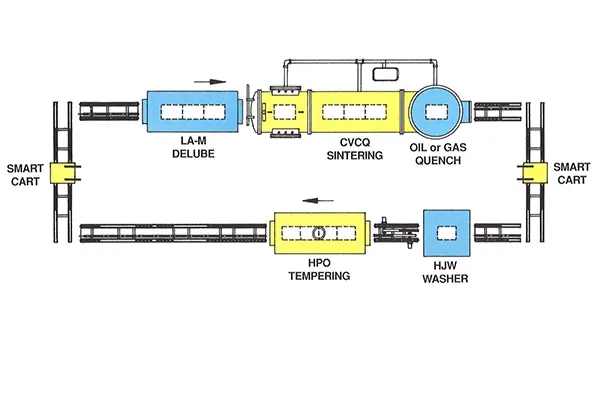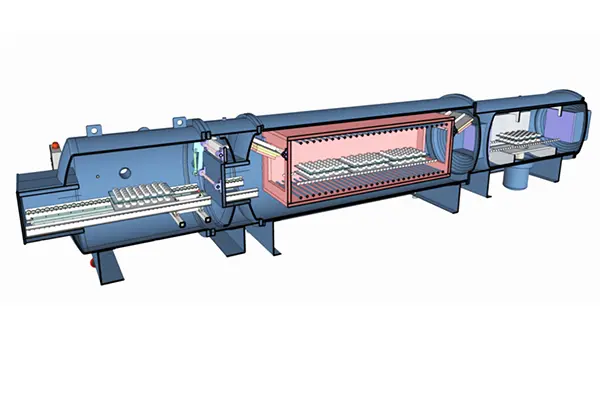 Continuous Vacuum
Continuous Vacuum
The C.I. Hayes “CVCQ-LAM” Vacuum Sintering Furnace uniquely combines atmosphere delubrication and vacuum sintering. An in-line atmosphere delube/preheat section and integral vacuum sintering chamber allow for processing of powder metal (P/M) compacts at conventional or high temperatures.
Processing versatility includes: conventional ferrous and ferrous alloy materials, stainless steels, tool steels, sinter hard alloys and custom blends. High pressure gas quenching, oil quenching or gas cooling is available.
Our proven atmosphere add-on module can process parts under dry or saturated nitrogen/hydrogen mixtures, dissociated ammonia or exothermic gas.
C.I. Hayes’ exclusive atmosphere to vacuum transition module assures continuous high volume production with the benefits of both atmosphere and vacuum.
Metallurgical Processes


Email Us Now About Gasbarre Vacuum Sintering – Continuous Furnaces
Call Today @ 401.467.5200
View Gasbarre’s Vacuum Sintering – Continuous Furnaces Brochure
Loading and unloading a continuous vacuum furnace does not interfere with processing and can be accomplished simultaneously. Several loads can be staged at once reducing the attention required from operators. Automatic indexing eliminates the need to program every batch which improves quality control.
In a batch vacuum furnace, the entire insulation assembly must be heated and cooled every cycle. In addition to adding significant energy costs, this increases the time required to thermally soak the workload and slows down quenching. Because the heating portion of a continuous vacuum furnace is held at temperature, only the mass of the work is heated and cooled. This reduces energy consumption and cycle time while also eliminating losses from nozzles and openings required for cooling.
Because the heating portion of a continuous furnace is held under vacuum and at temperature, gas development rates from outgassing and desorption are allowed to decay to very low levels. This reduces contamination from atmospheric moisture and allows for a purer environment without the need to bakeout the furnace between cycles.
Another significant advantage of continuous vacuum processing is reduced thermal wear on consumable refractory materials. Thermal cycling leads to ratcheting, distortion, and premature oxidation. The intrinsic thermal stability and purity of a continuous vacuum furnace reduces spare part cost and maintenance down time.
Because of the larger loads required to achieve production rates in a batch vacuum furnace, it can be difficult to achieve thermal uniformity during transient heating and cooling. The reduced load size in a continuous vacuum furnace means that parts experience a much more uniform thermal profile without sacrificing throughput.
Smaller load sizes reduce the footprint required to load and unload the furnace. Small loads are easier to maneuver and align making continuous vacuum an ideal choice for integration with automated production facilities without sacrificing throughput.